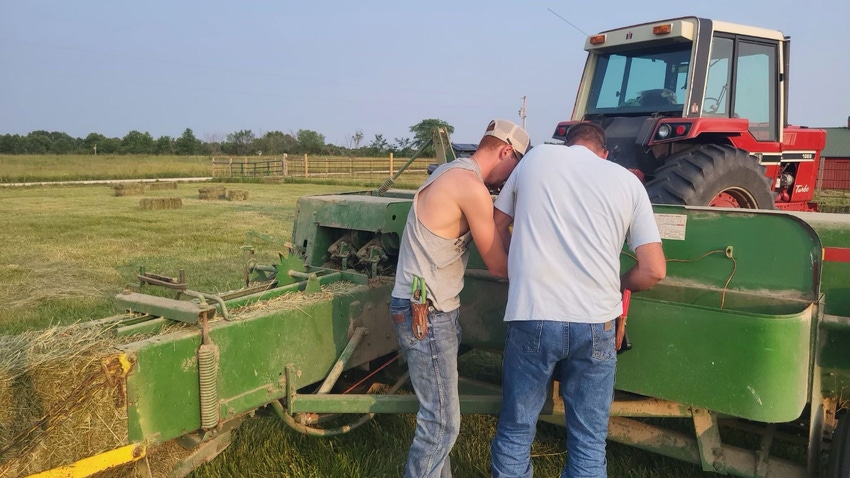June 23, 2023

It is no secret that one of my passions is helping the next generation return to the family farm. As Missouri director of agriculture, a producer myself and an advocate for our industry, how can I help clear the path for young people to return to the family farm? Or, for those who don’t have that opportunity, how can I make things easier for new farmers?
My husband, Kevin, and I are extremely proud that both of our children are involved in production agriculture.
Our son, Conner, completed his degree last year and is now on the farm full time. He is the sixth generation on the Chinn family farm.
Our daughter, Rachelle, farms with her husband on his family farm in Saline County. He is the third generation and their daughter, due later this summer, will be the fourth generation. My heart is full.
Plan, plan, plan
Before Conner returned to the farm, it was important for our family to create a plan. This is a three-generation operation, with Kevin’s parents still actively involved. I encourage everyone to have a serious discussion about how the young producer will fit into the operation and consider:
Is he or she an employee? An owner?
If you have other employees who are not family members, how are they affected?
The University of Missouri Extension is a great resource for succession planning assistance. Visit your county Extension office or the MU Extension website for information.
Succession planning is also on the agenda at the 50th Missouri Governor’s Conference on Agriculture this November at Tan-Tar-A Resort. Make plans to join us for this in-person discussion on tips for a smooth transition.
Diversification or expansion
Sometimes the next generation of agriculture wants to forge a different path.
It might be a diversification that allows for additional revenue on the farm, such as a pumpkin patch. Perhaps a young livestock producer sees a market for sheep and would like an opportunity to add a flock to the operation.
I am familiar with a family in another state who welcomed their four children back to the operation, but insisted each child bring a new idea that would add revenue to the bottom line. Now, the generation following those four has started to add new ideas.
For other farm families, bringing back the next generation means expansion to help offer additional revenue, which can mean a bump in livestock or maybe an increase in crop ground. Families must weigh the cost increase of more land or more livestock (the risk) with the opportunity for more income (the reward).
Farm expansion is one of the reasons why it has been important to increase meat processing capacity in Missouri. The increased number of processors, of all sizes, across our state means more opportunities for producers to raise livestock and know they have revenue potential.
I am so excited for the American Foods Group facility to open in about 18 months. When it reaches full capacity, the plant will process 2,400 head of cattle each day. For producers deciding whether to increase their herd size, or simply enter the beef business, the AFG facility could help tip the scales.
Provide amenities
In my role, I always keep rural Missouri and the farming community at the forefront of every decision and meeting.
If you know me, or have read this column before, you have heard me talk about broadband. I cannot emphasize enough that the farming community and rural Missouri must have access to better broadband.
Our rural residents, in most cases, do not have the same connectivity as their family members who live in town. Over the past few years, things have definitely improved. But there is still work to be done.
Better connectivity is vital on today’s farms and in all rural communities. As we encourage young producers to take over family farms or become first-generation farmers, we must not overlook the needs of the entire family unit. That list of needs includes connectivity, jobs and schools.
USDA data shows that two-thirds of farmland is owned by someone older than age 55. The average age of the American farmer is 57. I don’t know about you, but I am tired of hearing those numbers. We must turn the tide and encourage young people to farm.
I am encouraged when I hear more stories of people, like my son, returning to the family farm. My daughter and her husband have a terrific friend group of young producers in their central Missouri county. My goal is to see that replicated in counties all across this great state.
Chinn is the director of the Missouri Department of Agriculture and lives on a diversified farming operation in northeast Missouri.
Read more about:
Farm SuccessionAbout the Author(s)
You May Also Like




